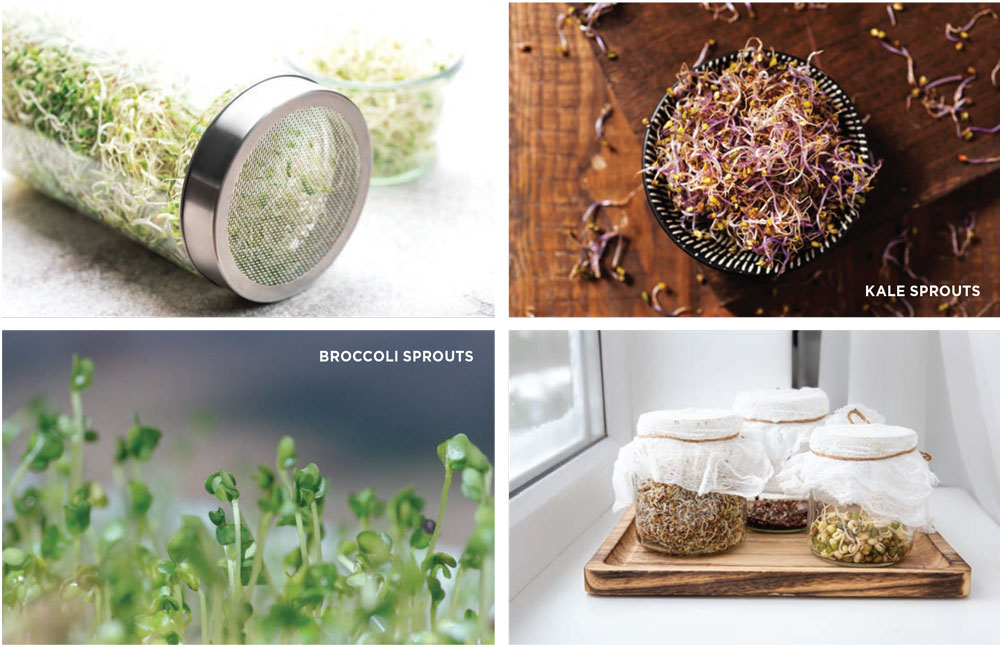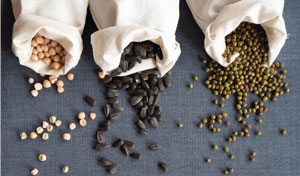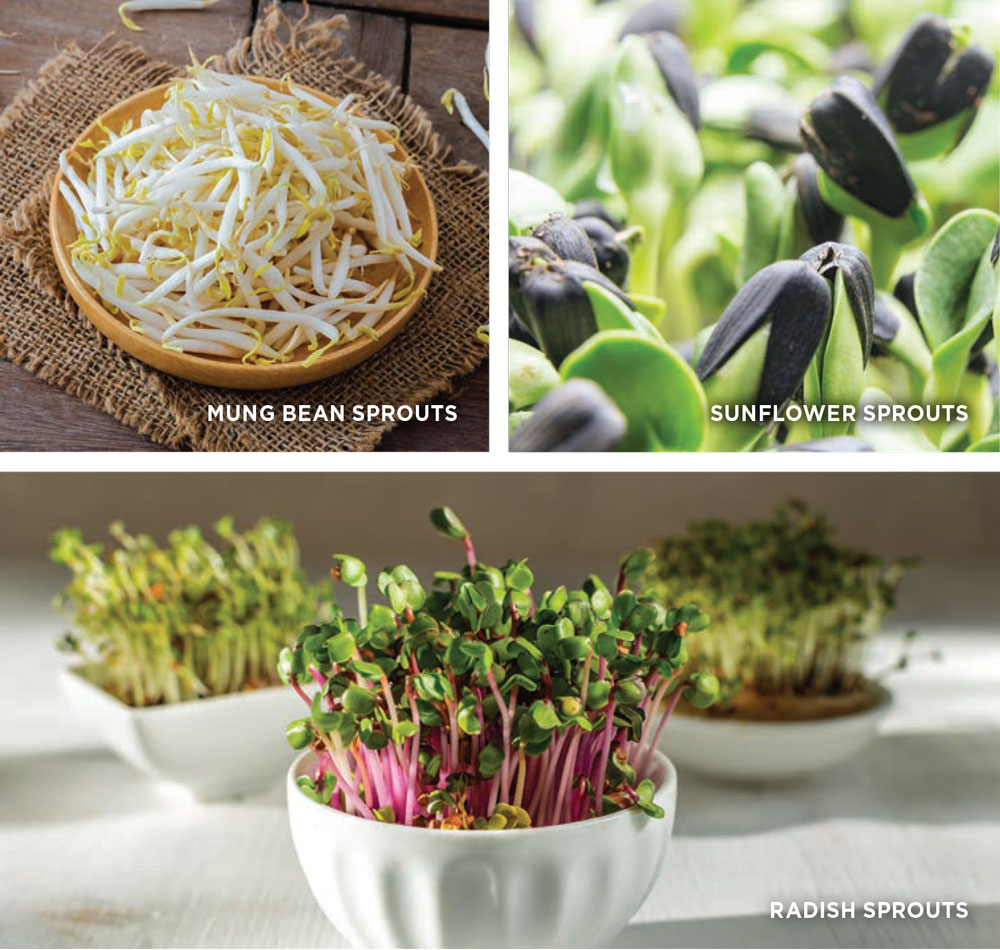GET SPROUTING!
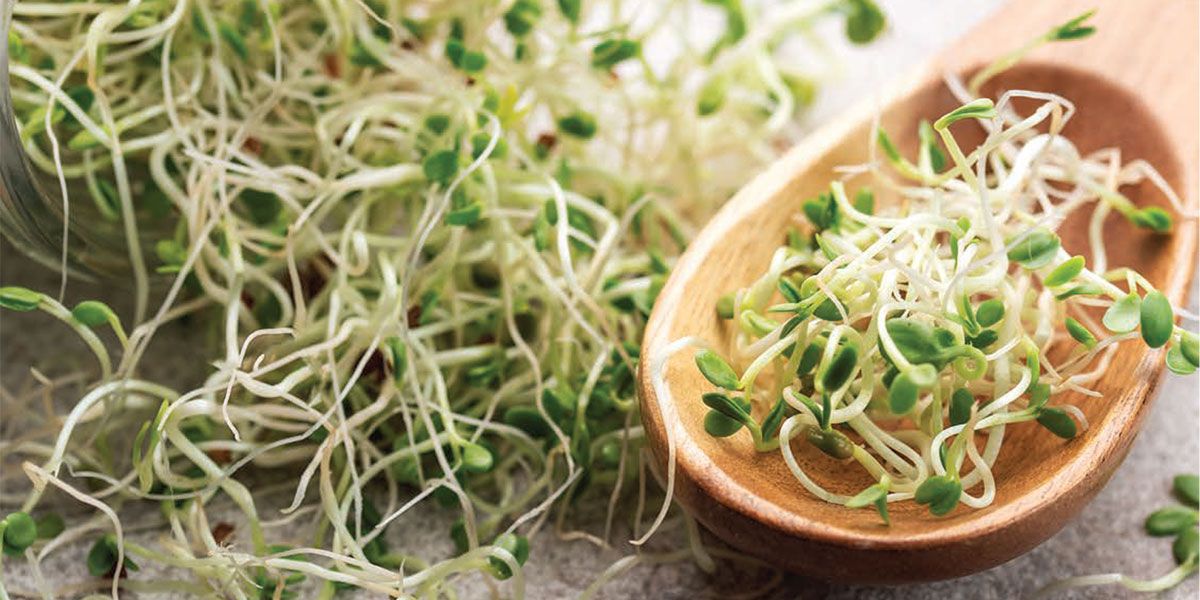
It’s Easy to Grow Your Own Delicious Sprouts Year-Round
Crisp salad toppers, sweet crunch in stir fry and fresh zest in sandwiches – all of these can be achieved by adding freshly grown sprouts to your meals. We’ve all seen sprouts for sale at our local grocery store or had them out in restaurants. But did you know how easy it is to grow your own? With minimal investment in low-cost supplies, you can have an endless supply of sprouts at-the-ready, any time of year. Unlike outdoor gardening that depends on seasons, or even indoor gardening that might require special lights or equipment, you can easily grow crunchy, sweet sprouts in your windowsill year-round.
DIY power foods
Not only are sprouts delicious, adding punch and flavor to myriad recipes, but they are also nutritional powerhouses. Different seeds offer various levels of vitamins and minerals — but they often deliver elevated levels of Vitamin K and C, along with magnesium, potassium, phosphorus and folate. They provide fiber and antioxidants and can improve digestion due to enzymes that help break down starch and support gut health.
What to buy
The only specialty equipment most people will need is a simple mesh-covered lid that can be fitted to a large, wide-mouth mason jar. You can buy these mesh lids online, some of which will also come with a matching dish that will hold the jar upside down to facilitate draining.
Then, of course, you will need to buy your seeds – and there are so many to choose from. Some of the more popular sprouts are:
- Alfalfa. A mild-tasting variety eaten raw, these are probably the most recognizable sprout, taking three to seven days until ready to eat.
- Broccoli. These are lightly spicy and nutty when eaten raw and are ready to eat in about five days.
- Beet. They taste earthy, just like full-grown beets, and they have pink stems, adding a pop of color to your plate. These take between 11-21 days to reach maturity.
- Chickpeas. They provide more protein than most sprouts. You’ll see green within two days – but they also require longer pre-soaking to start them off.
- Green peas. Tasty and refreshing, these take a little longer to pre-soak, with sprouts ready to harvest in about three days.
- Kale. Nutty and peppery in taste, with streaks of purple, kale sprouts can add flavor and color to your dishes in three to six days. These can be enjoyed raw or cooked.
- Lentils. With even more protein than chickpea sprouts, lentil sprouts can be eaten raw or cooked and are ready in two to four days.
- Mung beans. These are the sprouts we all know and love from some of our favorite Asian stir fries. These hold up well when cooking and are ready to eat in three to four days.
- Mustard. These are ready in three to six days and deliver a little kick like horseradish.
- Radish. With all the different radish seeds available, the sprouts will have some of the same tastes but be milder than their larger full-grown versions. These are ready in three to six days.
- Sunflower. These have more calories than most sprouts but offer a lot of nutty, crunchy goodness. You’ll have to wait between 12-14 days.
Keep it Clean
Sprouts are at elevated risk for bacterial growth, so take a few precautions while growing your own. Buy seeds and beans packaged for sprouting use vs. just using beans you have in the cabinet. Sprouting seeds are tested and free of common bacteria. Make sure all jars and lids are clean. Use filtered water when soaking, make sure seeds are draining through the mesh lid, and make sure the lid is well ventilated. Eat them within a week, and if anything looks off or they seem past their prime, toss and grow a new batch.
Time to sprout!
Always read the packaging for specific seeds, but generally sprouts will need the same care to get started and grow. Measure out the appropriate amount of seeds as recommended by the packaging and size of your container, but in general you will be using a small amount of seeds, probably no more than a tablespoon. Even a teaspoon will surprise you with how fast they will grow and fill a large mason jar.
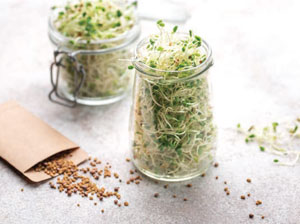 The first stage is to soak sprouts in fresh filtered water overnight. The next morning, drain the water and then rinse with a fresh batch of filtered water. Continue to rinse the sprouts a few times a day. Each time, drain and set the jar upside down to drain water through the mesh cover into a dish or on to paper towels.
The first stage is to soak sprouts in fresh filtered water overnight. The next morning, drain the water and then rinse with a fresh batch of filtered water. Continue to rinse the sprouts a few times a day. Each time, drain and set the jar upside down to drain water through the mesh cover into a dish or on to paper towels.
You will see seeds begin sprouting in a day or so, depending on which type you are growing. When you are ready to eat them, wash the sprouts in a bowl of water to shake away some of the hulls, which will float to the top. Dry them out on paper towels a bit before storing in the fridge in a lidded container lined with paper towels. Eat them within a week.
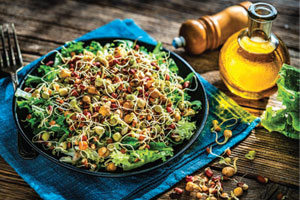 Enjoying your harvest
Enjoying your harvest
Use your crunchy harvest to brighten up salads, add heft and crispness to sandwiches and add extra nutrients to homemade veggie burgers. For sturdier varieties such as mung beans, add them to homemade stir-frys and soups. Or add just a sprinkle to your plate for extra color, flavor and fun. ✦
alfalfa, beet, broccoli, chickpeas, green peas. kale, lentils, mesh lids, mung beans, mustard, radish, sprout, sunflower, wide-mouth mason jar, windowsill
